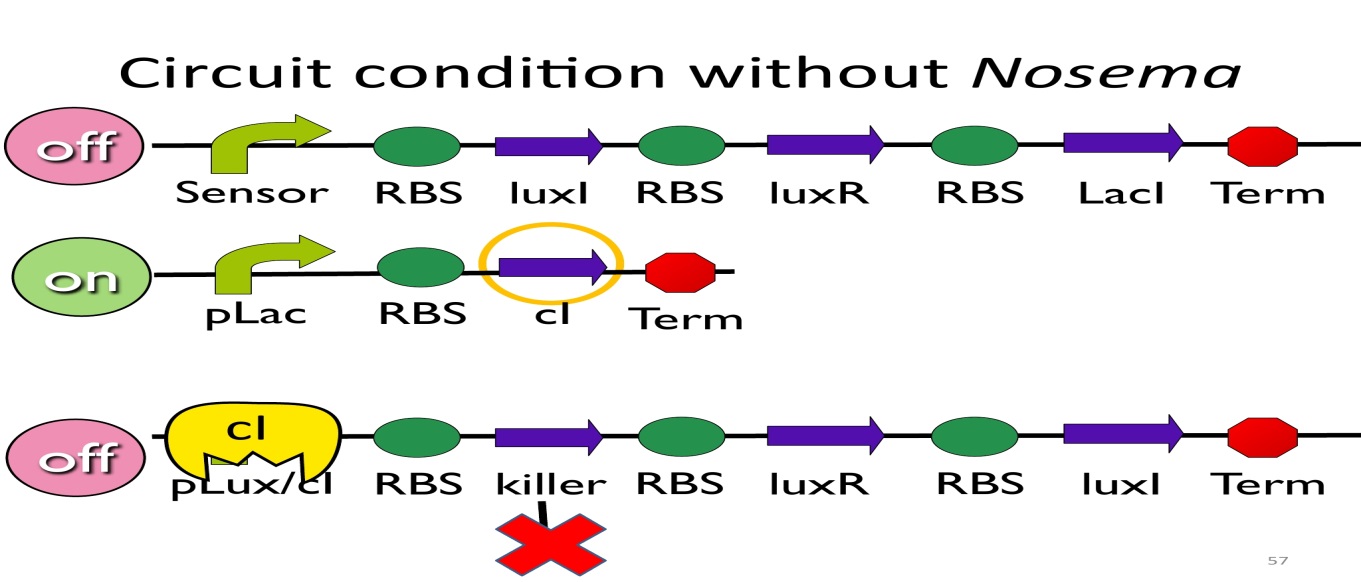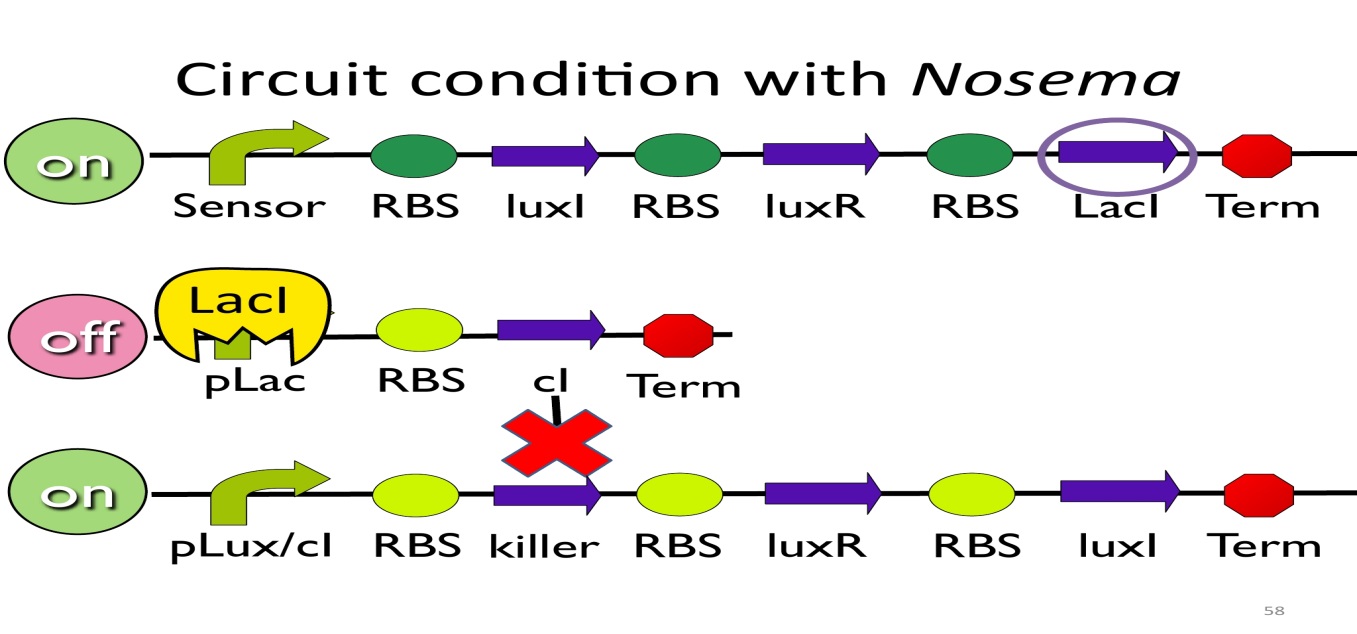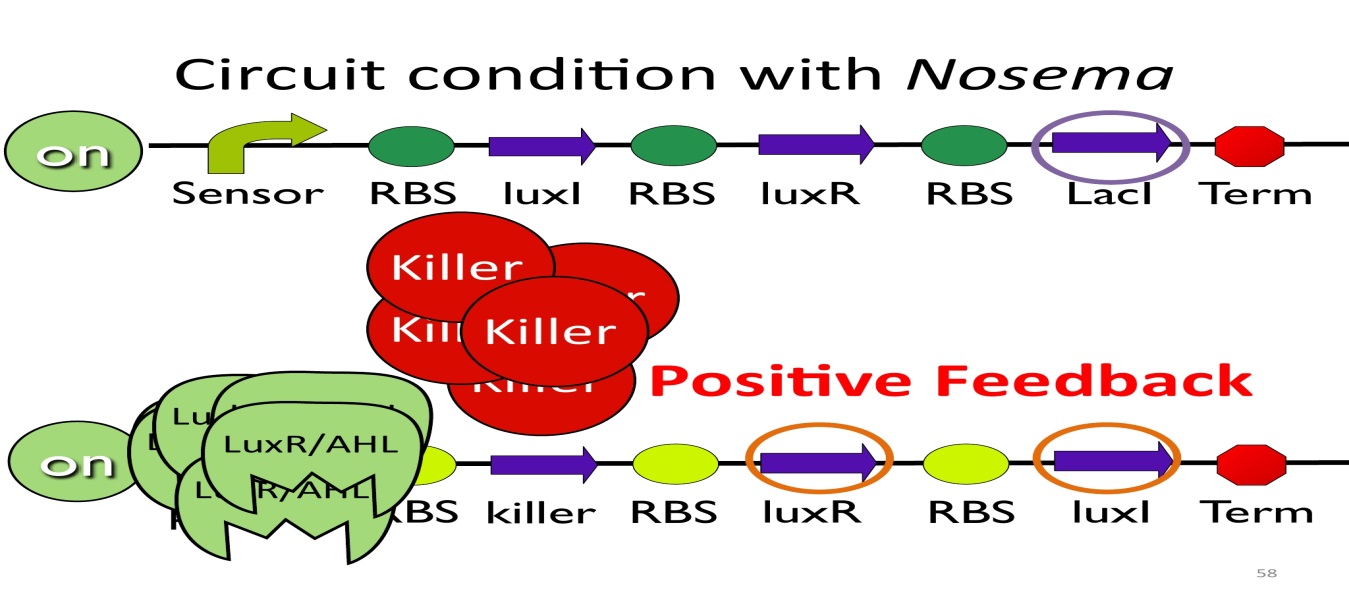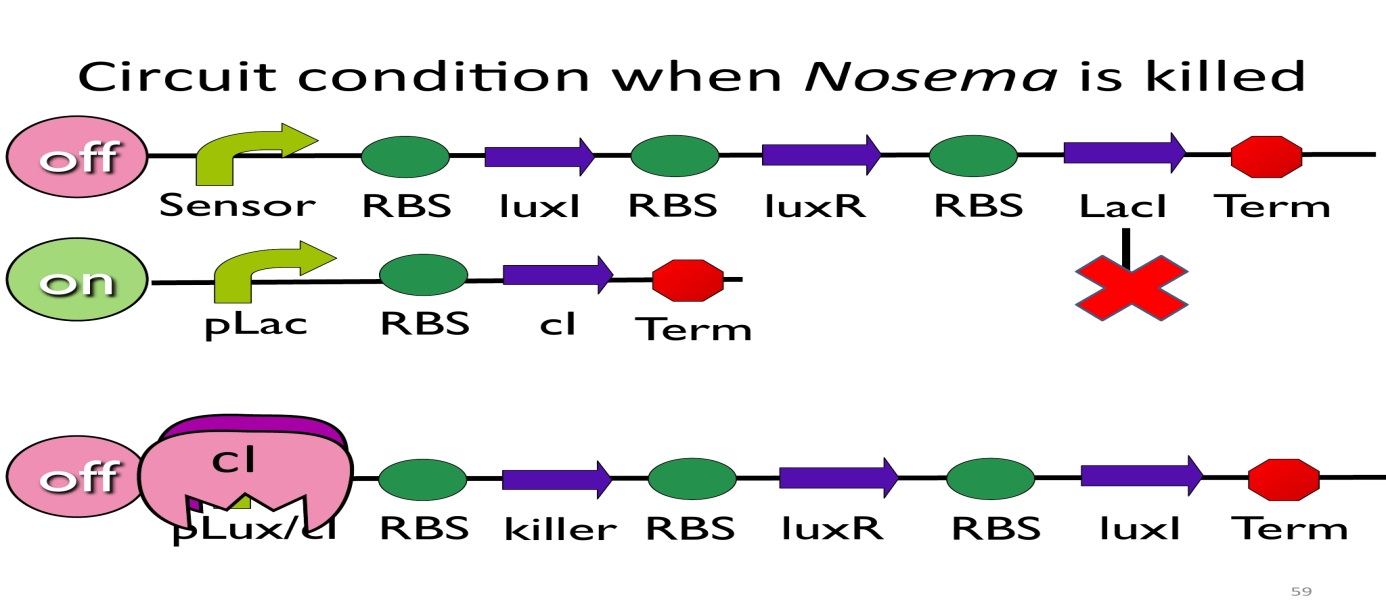Team:NYMU-Taipei/Modeling/MainParts
From 2013.igem.org
Mastershot (Talk | contribs) |
Mastershot (Talk | contribs) |
||
| Line 44: | Line 44: | ||
<html> | <html> | ||
<div lang="latex" class="equation"> | <div lang="latex" class="equation"> | ||
| - | \frac{d[mRNACI]}{dt}=\ | + | \frac{d[mRNACI]}{dt}=\frac1-[LacI]^{nLacI}{KdLacI^{nLacI}+[LacI]^{nLacI} )×PoPSpLac×N/V-kdegmRNA×[mRNACI] |
</div> | </div> | ||
</html> | </html> | ||
Revision as of 20:23, 27 September 2013


Function of the parts:
- circuit regulators:
- LacIregulatedpromoter(pLac) : when LacI exists, it will bind to LacIregulatedpromoter(pLac) and represses the promoter.
- pLux/cIhybridpromoter(plux/cI) : when luxR/AHL exists, it will open pLux/cIhybridpromoter(plux/cI), while cI will repress the promoter. What’s more, plux/cI is cI-dominant, which means when cI exists, the hybrid promoter will be repressed whether luxR/AHL exists or not.
- Circuit regulation:
- Circuit condition without Nosema:
Without NosemaCeranae, the first circuit will not open, and thus, no LacI will be produced. Since there is no LacI binding to pLac, pLac will not be repressed, which means cI will be produced. After that, cIwill bind to pLux/cI-hybridpromoter, leading the third circuit to be off.
- Circuit condition with Nosema:
When NosemaCeranae infects the bee, bee’s immune system will be activated, leading to the concentration of ROS(reactive oxygen species) to be high. In response, E. Kobee will enhance the production of oxyR, which binds to transcription binding site ahead of trxC (an oxyR-activated promoter; namely, the sensor), leading to the first circuit to be on.
Since the first circuit is on, the downstream LacI gene will be produced and bind to pLac, leading to the second circuit to be off.
After the second circuit is closed, no cI is produced, leading to the third circuit to be on (no repressor at all). And then, killer protein will be produced and kill NosemaCeranae.
- Positive feedback:
Besides the LuxI and LuxR(which then form a complex called luxR/AHL) produced by first circuit, the third circuit will also produce luxR/AHL, which acts as a positive feedback and strongly enhances the production of killer protein.
- CircuitconditionwhenNosema is killed:
After Nosema is killed, the sensor will be off and no lacI will be produced. Without LacI, the pLac will not be repressed, and the second circuit will be on, leading to the production of cI. After cI binds topLux/cIhybridpromoter, the third circuit to be off.
The overall circuit will switch to the beginning stage when there is no Nosema.
The purpose of this modeling is:
- To know how much time it needs from sensing to killing the Nosema after infection
- To know whether the pathway is effectiveor not
- To know the range of killer protein concentration(from the minimal concentration which Is effective to kill Nosema to the maximal concentration which will not do harm to the bees)
It is assumed that AHL is abundant and thus the formation of AHL2LuxR is determined only by the concentration of LuxR; CI’s mechanism of binding to the promoter is assumed to act as hill effect form; kill protein will sustain a period of time before it is degraded naturally without any other types of degration.
Equation1:
 "
"












